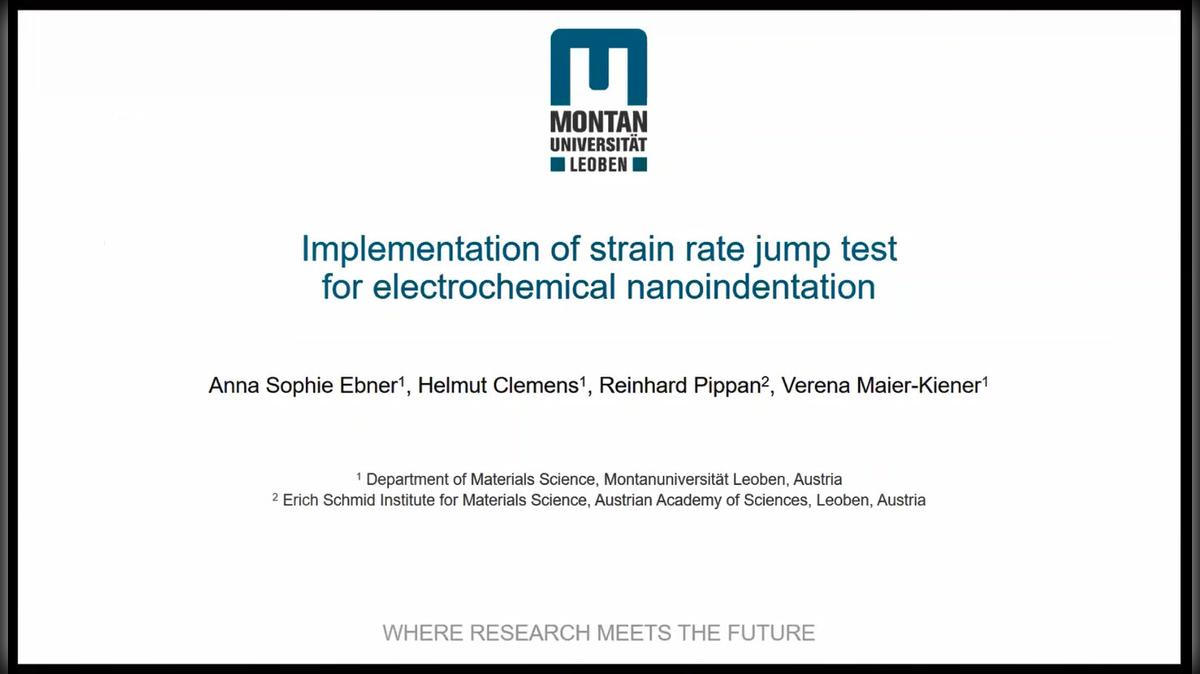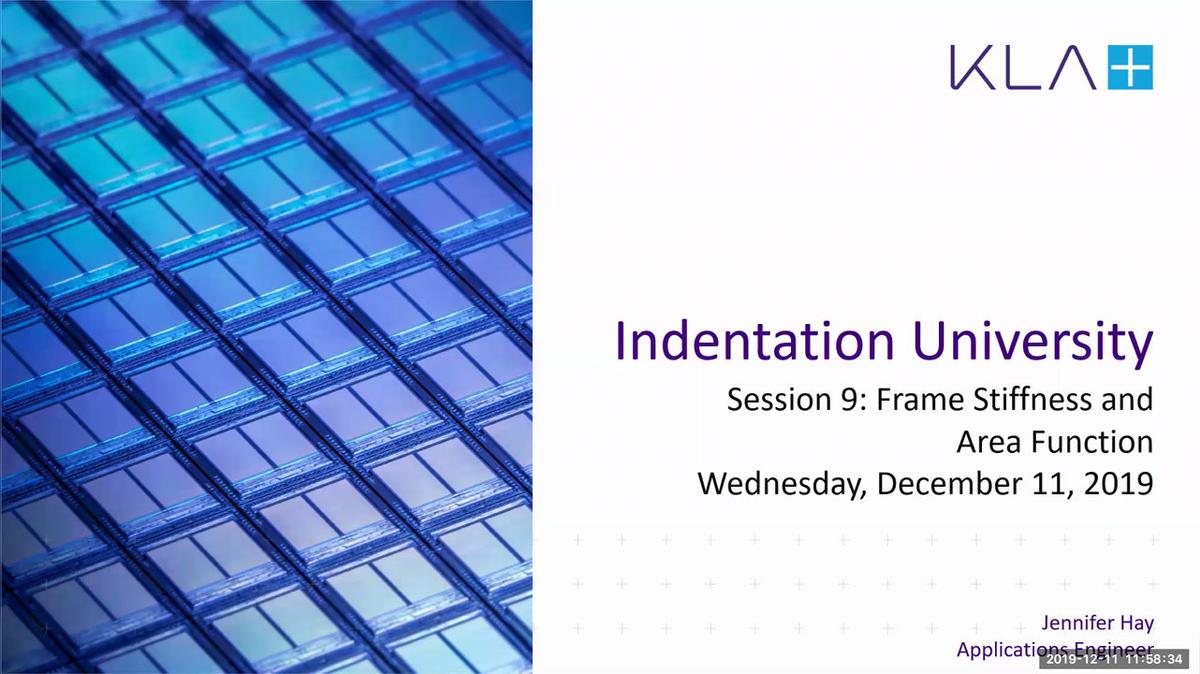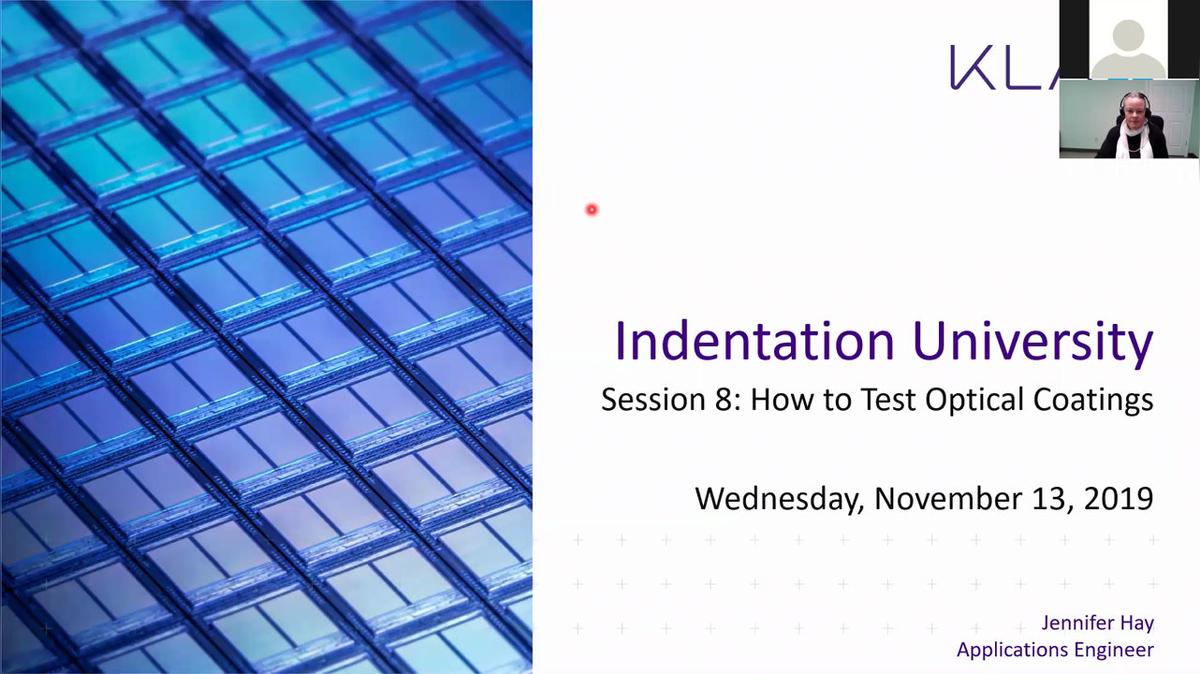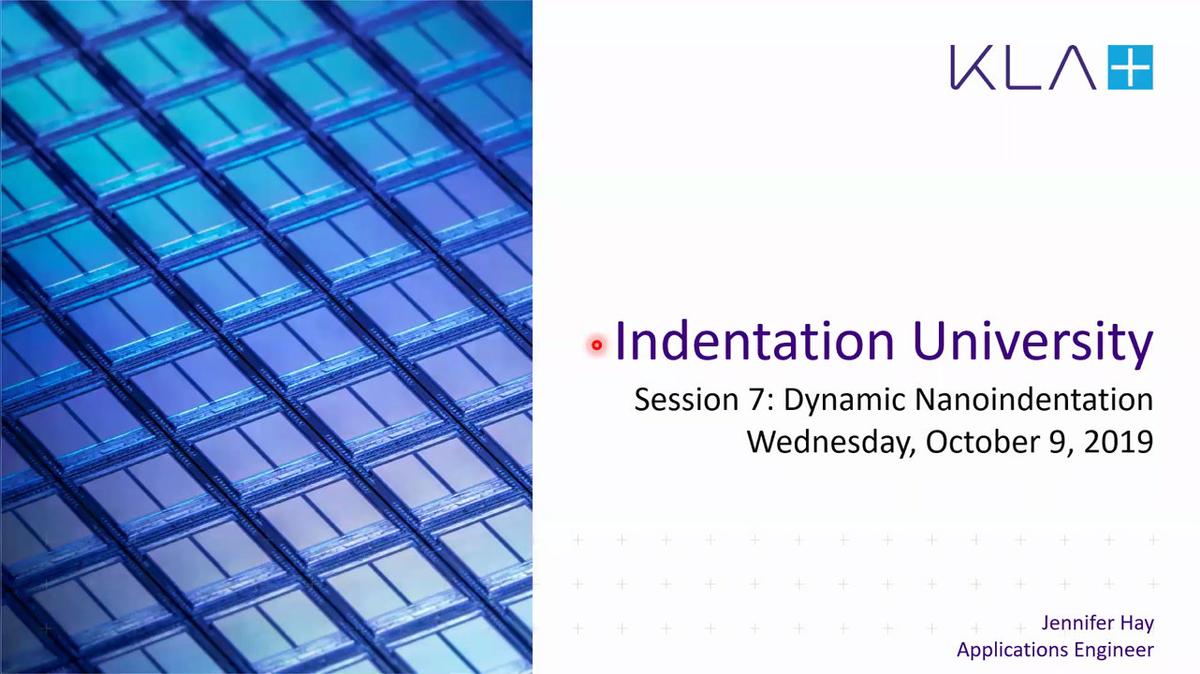10:06

Hydrogen embrittlement has been of ongoing interest to materials science community and industries over the past several decades. In-situ electrochemical nanoindentation became a versatile tool for probing the impact of electrochemical charging on different materials and technical relevant alloy systems. Besides measuring the classical mechanical properties, such as hardness and Young’s modulus...
23:29

Nanoindentation is typically performed at slow strain rates < ~0.1/s, which precludes it from ballistic applications. Recent years have seen the development of nano-impact testing, which produces much higher deformation rates. However, data from such experiments are challenging to interpret, because the high strain rates are not sustained throughout the experiment and the classical definitio...
01:01:57

Two nanoindentation calibrations are accomplished by means of indentation experiments on a reference material. These are the load-frame stiffness calibration, which quantifies the expected flexure in the test equipment, and the area-function calibration, which quantifies the precise shape of the indenter. This presentation explains how these calibrations affect nanoindentation analysis, and how...
01:12:49

Although optical coatings are designed for the control of light (anti-reflective, reflective, splitting, filtering, etc.) it is their mechanical properties which govern longevity. Scratches at any scale lead to excessive absorption of laser energy causing localized thermal stress and ultimate failure. This session is a live demonstration of dynamic nanoindentation with the KLA iMicro nanoindent...
52:20

Jennifer Hay unlocks all of the analysis used in dynamic nanoindentation and the continuous stiffness measurement technique. The CSM technique is the greatest advancement in nanoindentation over the last 30 years.